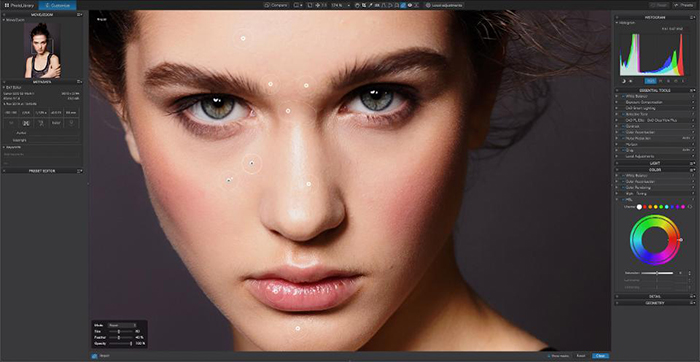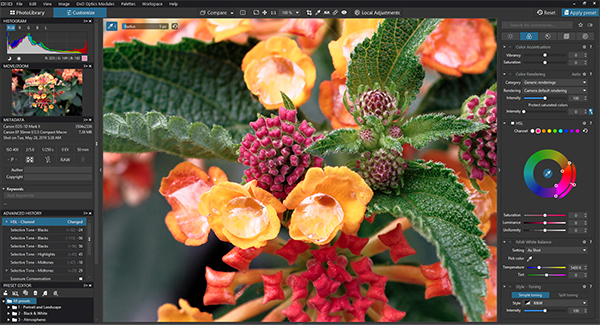
Adjust the effect to suit your taste and your vision for the balance between light and dark.

#Customising dxo photolab 2 full
Use the full range of your sensor by revealing new details in underexposed or overexposed areas in your RAW files.

Instantly locate the photos you’re searching for thanks to the dynamic interpretation search function, which suggests relevant results on the fly.ĭxO PhotoLab Features: DxO Smart Lighting The PhotoLibrary makes sorting and organizing images a cinch. Those tools are ideal for partially desaturating images.ĭxO PhotoLab rounds out the software’s existing filters and image processing tools with the new PhotoLibrary feature. The Saturation and Luminance Sliders now work independently of each other, making them perfect tools for converting color to black and white without the use of complex masks. The Uniformity Slider helps you standardize color variations within a specific range. The DxO ColorWheel can fine-tune color values, select replacement colors, and it can even adjust transitions and tints for truly distinctive effects. You can use it to select color ranges from eight separate channels, including orange and purple. The new DxO ColorWheel is a fantastic new color adjustment tool. It can help you produce more creative and natural-looking images. It automatically corrects optical flaws, extends dynamic range, and seamlessly removes digital noise from images.ĭxO PhotoLab 4’s HSL (Hue, Saturation, and Luminance) Tool is an exciting and superbly visual way to manage color.
#Customising dxo photolab 2 for mac
And understand how sharpening is applied.DxO PhotoLab is the award winning RAW conversion software for Mac and PC. So I would suggest yes, be guided by your eyes - but by looking at a print, not the monitor. I’ve shown this to several people, some hardened professionals using LR/ACR every day, who had no idea this function even existed. In LR or ACR I routinely mask (usually to about 90%) when applying sharpening, so that only edges and significant detail are sharpened, this helps a lot with controlling noise in images, and can help avoid edge artefacts.

Another issue with PL is that if you use Unsharp Masking, as far as I can tell there is no way of masking the sharpening effect, so it is applied to everything, including noise/grain in smooth areas such as sky. PL already has very good “lens sharpening” applied in the RAW conversion stage. If you print from another software package, be aware that may also add a sharpening step by default - check and if necessary turn it off. Often if you just leave sharpening settings at default, an A3 print will usually look perfectly sharp. Even at 80% on screen, for most images this would be a huge print, and at 100% my monitor (Dell 1920x1200, 24" screen) is just over 100 pixels per inch, which with an image 4800 px high would equate to a 48 inch high print, much bigger than many people would ever print (at 300 dpi, you would print a 16" high print)… Making an image “look sharp” on screen often translates into an over-sharpened print. With DXO PL, sharpening is only visible at 80% magnification or higher - this is important to know and has been the subject of many questions on this forum over the years.

But be aware that sharpening on screen is not an exact representation of how your output will look. Joanna says: “The best guide is your own eyes”


 0 kommentar(er)
0 kommentar(er)
